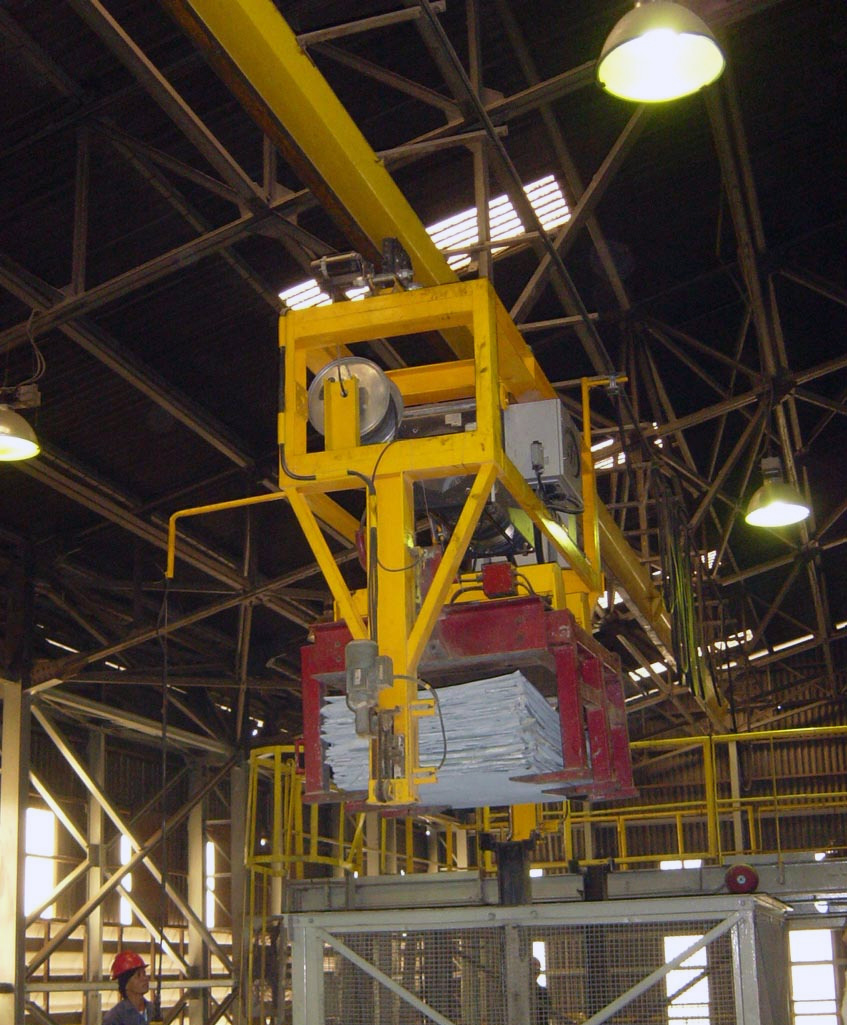 Padaeng Industries of Thailand operates the only zinc smelter in Southeast Asia, with an annual production capacity of 110,000 metric tons of zinc metal and alloys, including special high-grade
Padaeng Industries of Thailand operates the only zinc smelter in Southeast Asia, with an annual production capacity of 110,000 metric tons of zinc metal and alloys, including special high-grade
(SHG) zinc metal and value-added zinc alloys.
The company’s smelter in the Tak province uses 59 cranes of up to 16 tons, including maintenance and production cranes. The cranes operate continuously to lift metal from cathodes for stripping and lowering to the furnace for the production of ingots.
“Cranes such as the CXT type used to lift metal from the cathodes and to feed material to the furnace are vital to our production 24 hours a day,” said Padaeng Industry Vice-President – Maintenance Mr. Pothong Pipatpaiboon. “We can’t afford to have them go down. We require world-class standards of reliability and safety.”
“We originally met Konecranes when they came on site as a contractor. We drew on their experience to prepare our yearly inspections. We tried them out and they were very strong, terrific,” said Mr. Pothong.
“The main thing about Konecranes is that their standards of reliability and quality are very high. After Konecranes came into our plant from 2003, the number of breakdowns dropped lower and lower to the point where we now achieve practically zero breakdowns and zero downtime from cranes that are serviced by them. And besides the service aspects, they also assist us with upgrades where required and all upgrades since 2003 have employed Konecranes equipment, which has been outstanding.”
Crane modernization – exceptional performance
One major modernization project in which Konecranes was involved was the upgrade of two zinc cathode cranes. Padaeng wanted to make sure these vital cranes were not compromised by their harsh operating conditions. At the same time, Padaeng wanted to increase plant capacity, with the new 8-ton two-speed hoists replacing the old 6.3-ton hoists with single-speed hoisting motors.
“We installed new hoisting machinery that would achieve the required speed with the heavier load. We also enhanced safety with a new limit switch package for accurate positioning of the loading device,” said Konecranes branch manager Jirapong Kocharack. “To further enhance safety and reliability, the existing crane structure and runway was carefully inspected and recalculated for the new loadings.”
The hoisting machinery for the crane frame was factory assembled and tested, to minimize on-site erection time. The cast iron motor frame and machinery frame were especially painted to resist the aggressive environment and robust shoe brakes were fitted.
Site work for the first crane was completed in 36 hours and the second one in 18 hours. The erection team was thoroughly briefed before going on site, so as to achieve minimal installation time.
In addition to the modernization, Konecranes maintenance staff is extensively involved in statutory inspections at Padaeng. “The team on site is fully expert in inspections and in safety,” says Mr. Pothong.
“As part of their programmed maintenance they point out potential problems to us before they arise - and this is very important to us because the cranes are key to our production 24 hours a day. “Their preventive maintenance is very, very good and their relationship with our own staff is very close, which is important. They are prompt to respond to all our needs and have built a very solid and productive partnership with us.”